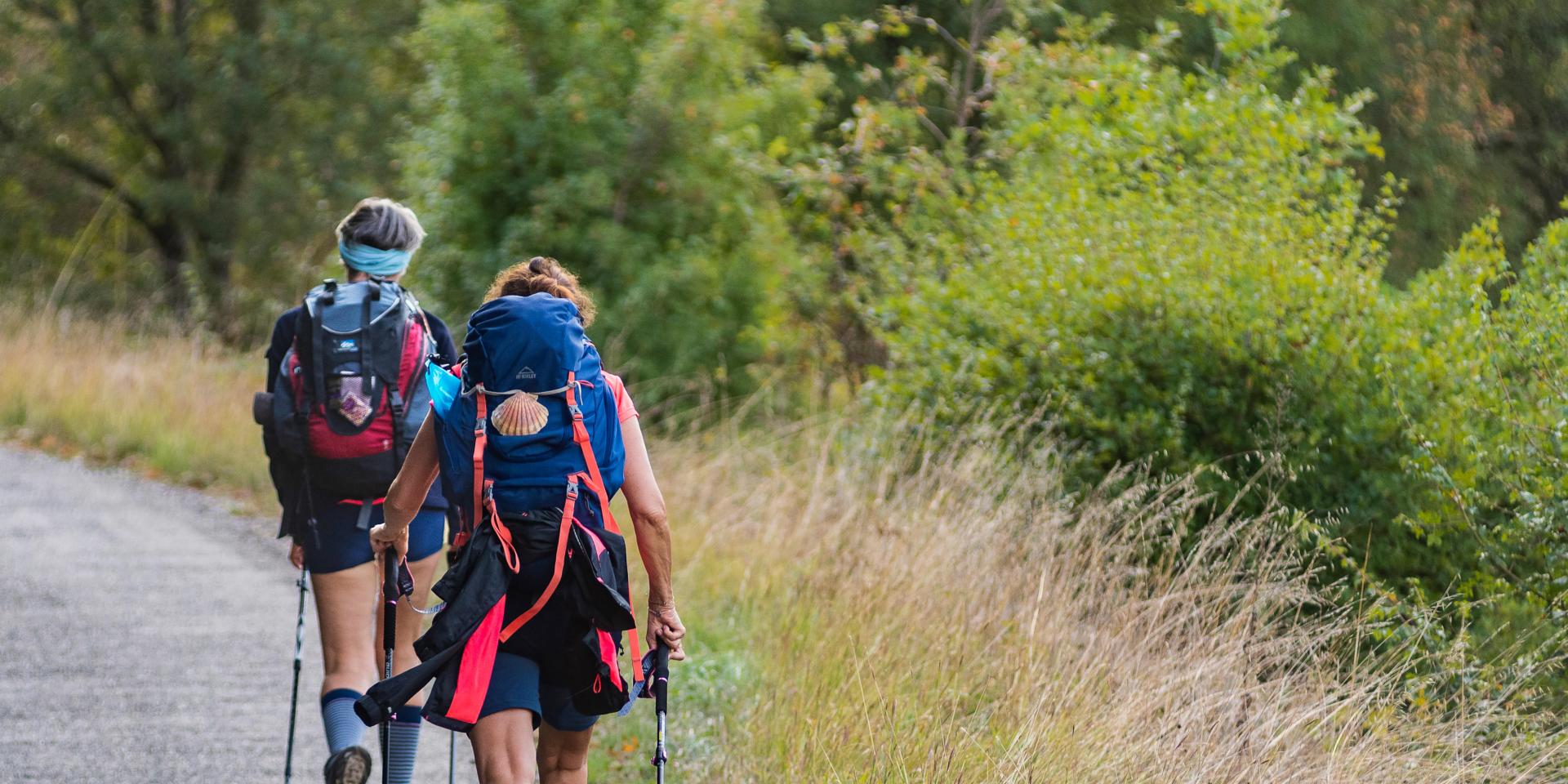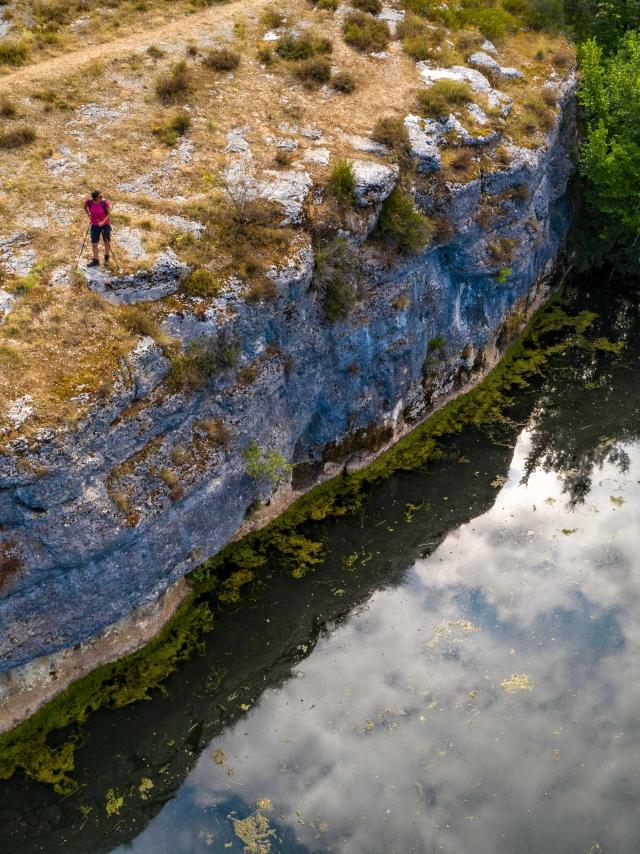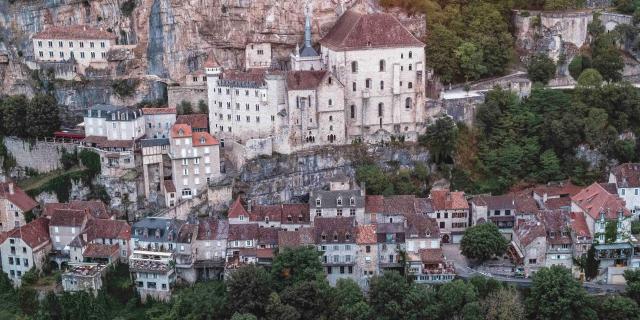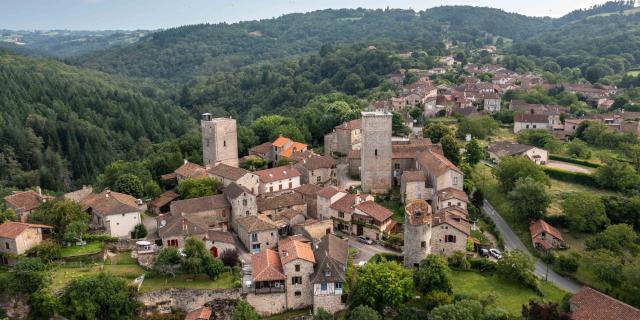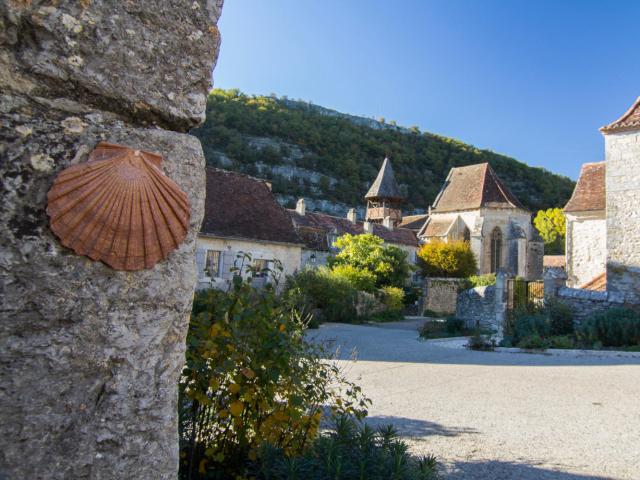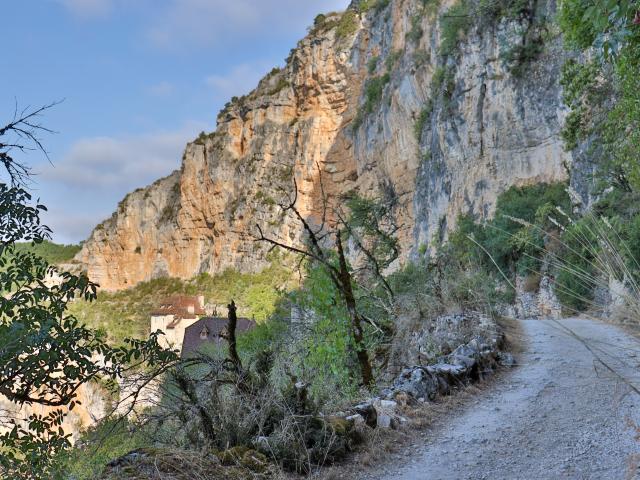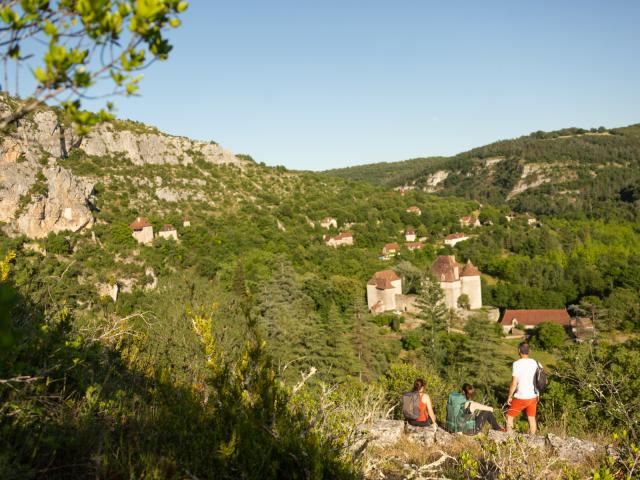THE GR®65
While the Compostelle pilgrimage dates back to the Middle Ages, the current GR®65 is much more recent. Developed in 1972 by the Fédération Française de la Randonnée Pédestre, it is the most popular route and the best equipped in terms of accommodation. The French section runs from Le Puy-en-Velay in the Haute-Loire to Saint-Jean-Pied-de-Port in the Pyrénées-Atlantiques, on around 755 kilometers of long-distance footpath, crossing the Lot from north to south. However, the via Podiensis starts much higher up. From Geneva, the 1120-kilometer route leads to Roncesvalles. With our pilgrim’s notebook in hand, let’s strap on our rucksacks and set off on this legendary route. From the last green hills ofAveyron to the golden stone of the Lot valley, the route takes us from stage to stage, treading two sections of Unesco World Heritage trails and discovering towns and villages of singular character: Figeac, Faycelles, Cajarc.
